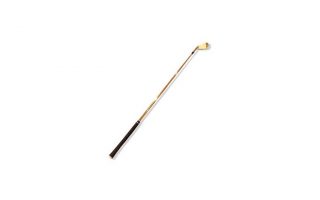London Gold Market Report
by Ben Traynor
Monday 1 October 2012, 07:30 EDT
“Bull Trend Intact” for Gold, But “Zero Silver Demand” Seen in India
SPOT MARKET gold bullion prices dipped below $1770 an ounce during Monday morning London trading, though they remained in line with the last fortnight’s price action, while European stock markets rallied along with the Euro following news late last week that the capital needs of Spain’s banks are within existing provisions.
“On the monthly chart, the bull trend remains intact, with uptrend support at $1594 and resistance at $1790, the previous high,” says technical analyst Russell Browne at Scotia Mocatta.
“[Gold seems] to have established a base now down at $1740,” adds Dave Govett, head of precious metals at brokerage Marex-Spectron.
“But we also seem to have a ceiling in place between $1785 and $1790…I think it will take some help from other markets to break us one way or the other…[but I] think that before long we will see a renewed assault on $1800.”
Silver bullion traded around $34.50 an ounce, in line with recent weeks, before easing towards lunchtime, while other commodities were also flat.
Demand in India is “zero for silver”, one dealer told newswire Reuters this morning, adding that “demand is there in gold as it is the season”.
US Treasury bond prices gained during this morning’s trading, while prices for UK Gilts and German bunds fell after manufacturing data showed ongoing contraction in the Eurozone.
Sales of American Eagle gold investment coins by the US Mint rose by 75% last month compared to August. Last month’s sales were however the lowest for September since 2007, and were down nearly 25% from September 2011.
On the gold futures and options market meantime, the speculative net long position of Comex traders – measured as the difference between bullish and bearish contracts – rose to its highest recorded level since 6 September 2011 last Tuesday, weekly Commodity Futures Trading Commission data show.
“There has been a considerable slowing down in long positions added,” note the commodities team at Standard Bank.”
“As we’ve seen in the price behavior of gold over the past weeks, it takes very little to spur liquidation.”
The results of stress tests published Friday show seven of Spain’s banks need to be recapitalized, while another seven lenders passed. Several of those deemed to have inadequate capital to withstand severe market stress have already been nationalized.
In June, Spain’s government agreed a €100 billion credit line from Eurozone rescue funds to fund the recapitalizations, which the stress tests suggest will cost around €60 billion.
Spanish manufacturing activity shrank at an accelerated rate last month, according to purchasing managers index data published Monday. Manufacturing across the Eurozone as a whole also contracted, although less sharply than a month earlier, PMI data show.
The Eurozone unemployment rate remained at 11.4% for the second month in a row in August, its highest level since the financial crisis began in 2007, figures published this morning show.
“There is simply not enough growth in the Euro region to create sufficient jobs and the unemployment rate still has not reached its peak,” says Thomas Costerg, economist at Standard Chartered, speaking before the unemployment figures were released.
“A worrying trend is that the number of unemployed is now also expanding in core countries like Germany, which had been rather sheltered up to now.”
Here in the UK, manufacturing continued to contract last month, and at a slightly accelerated rate, PMI data published Monday show.
Figures from the Bank of England meantime show a drop in mortgage lending and consumer credit during August, while M4 money supply, the Bank’s preferred measure, rose 4.1% in the year to July.
US manufacturing PMI data are published later today.
Over in China, which is today celebrating National Day, manufacturing continued to contract last month, but less sharply than in August, official PMI data show.
China’s central bank has twice cut interest rates this year, and has also reduced the amount of reserves banks are required to hold. In addition, Beijing announced a 1 trillion Yuan infrastructure program last month.
“The policies implemented so far have failed to arrest a cyclical economic downturn,” says ANZ economist Liu Ligang, adding that “monetary easing and fiscal policy could accelerate” after the Communist Party congress next month, which will see a change of leadership.
“[The Party will want] to maintain social stability and a stable political transition.”
“With the political dust finally settled,” adds Bank of America Merrill Lynch economist Ting Lu,
“Chinese leaders will be forced to shift some efforts to counter the growth slowdown and deteriorating employment.”
India, traditionally the world’s biggest gold buying nation, is seeing a “booming” trade in recycled gold bullion, after drought forced some in rural areas to sell some of their gold, Reuters reports.
“There won’t be new demand from farmers and scrap will flow into the market,” says Prithviraj Kothari, president of the Bombay Bullion Association.
Recycled gold accounted for 57 tonnes of India’s gold supply last year, equivalent to 6.1% of total 2011 Indian gold demand, data published by the World Gold Council show. The bulk of supply, 969 tonnes, came in the form of imports. Authorities have twice raised the level of duty on gold imports since the start of the year.
“In coming years, 50% of the requirements will be met through scrap,” reckons Kothari.
Ben Traynor
Gold value calculator | Buy gold online at live prices
Editor of Gold News, the analysis and investment research site from world-leading gold ownership service BullionVault, Ben Traynor was formerly editor of the Fleet Street Letter, the UK’s longest-running investment letter. A Cambridge economics graduate, he is a professional writer and editor with a specialist interest in monetary economics. Ben writes and presents BullionVault’s weekly gold market summary on YouTube and can be found on Google+
(c) BullionVault 2012
Please Note: This article is to inform your thinking, not lead it. Only you can decide the best place for your money, and any decision you make will put your money at risk. Information or data included here may have already been overtaken by events – and must be verified elsewhere – should you choose to act on it.













